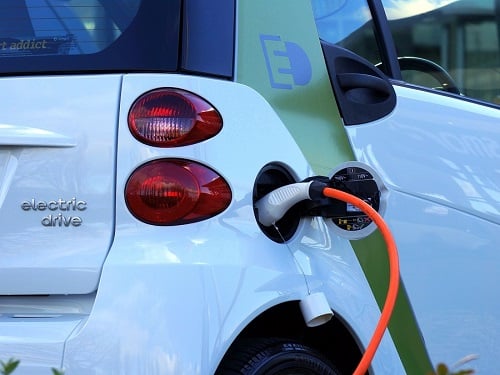Bi-directional charging technology offers a way to relieve the pressure on the grid from EV charging, share power, and reduce costs for EV owners.
What Is Bi-Directional Charging?
Instead of taking power from the grid to charge an EV, bi-directional charging allows an EV’s battery to both receive energy from the electricity grid and to share the excess power it generates with the grid. I.e., with bi-directional (two-way) EV chargers, electricity can flow both ways – from the grid to vehicle, and from the vehicle to the grid. This type of charging can be particularly effective when combined with the use of solar rooftop chargers (reducing reliance on the grid altogether).
How Does It Work?
With bi-directional charging, when the EV is charged using AC (alternating current) electricity from the national grid via a charging point, e.g. at the supermarket. This is converted to DC (direct current) electricity by a converter in the vehicle or in the charger, so the electricity can be used by the vehicle. Also, the internal converter in a bi-directional charger can convert the energy stored in the EV’s battery from DC electricity back into AC electricity so it can be used for the house or sent back to the national grid.
The Benefits
The main benefits of bi-directional charging for EVs are that:
– EV batteries can be used to store enough power to use the excess for the home or the grid. For example, an EV battery can store many times more power than the standard 7 kWh lithium batteries found in solar photovoltaic systems.
– EV owners can save money on their energy bills using bi-directional charging. For example, in 2019, in a demonstration by Fermata Energy (a U.S. V2G solution provider), discharging less than half of the battery capacity of a Nissan LEAF for a peak 15-minute period was found to have saved $191.79 utility bill demand charges during the first month. Also, charging EVs at off-peak hours at the lowest rates while feeding power back into the grid (when energy rates are highest) can also reduce overall energy costs.
– The national grid’s performance can be improved by pressure on it being relieved during high-demand periods.
Drawbacks
Bi-directional charging is still a relatively new idea. This means that there are currently only a few EVs that have bi-directional charging capabilities e.g., the Nissan LEAF and the Mitsubishi Outlander plug-in hybrid. This year, however, these capabilities are expected to be built-in to more makes and models e.g., all Teslas, The Volkswagen ID range, and the Ford F-120. more.
Being a new innovation, there are only a few bi-directional wall box chargers currently on the market and these are relatively expensive. Also, advantages can only currently be gained by those who charge at home or with a dedicated workplace charger. Some security commentators have also warned that EV charger security problems could be spread to the home or grid with the expansion of bi-directional charging.
Charging Network Still A Big Worry In the UK
Far from thinking about bi-directional charging, many people in the UK are still holding off from committing to EVs due to worries about finding charging points / the lack of an effective charging network.
For example, the UK’s Society of Motor Manufacturers and Traders (SMMT) has noted that although demand for green cars has surged (1 in 6 new cars) the public charging infrastructure hasn’t kept pace. Also, the SMMT’s concerns about public chargers not being equally distributed across the UK, and the need to regulate the price of chargers has led it to the call for a unified, national approach that could be led by a new regulator e.g., “Ofcharge.”
What Does This Mean For Your Organisation?
Although still at its beginnings, bi-directional charging looks like being an innovation that could save EV owners money, reduce reliance on the grid and reduce pressure on the grid. At the same time bi-directional charging could be an important way to support and encourage the growth of EV adoption thereby helping meet green targets. Combining bi-directional charging with other green power sources, such as solar panels, can help maximise its sustainability and bi-directional charging looks as though it will not only benefit individual and business EV owner/operators but could be another valuable tool for helping to tackle pollution and climate change.




